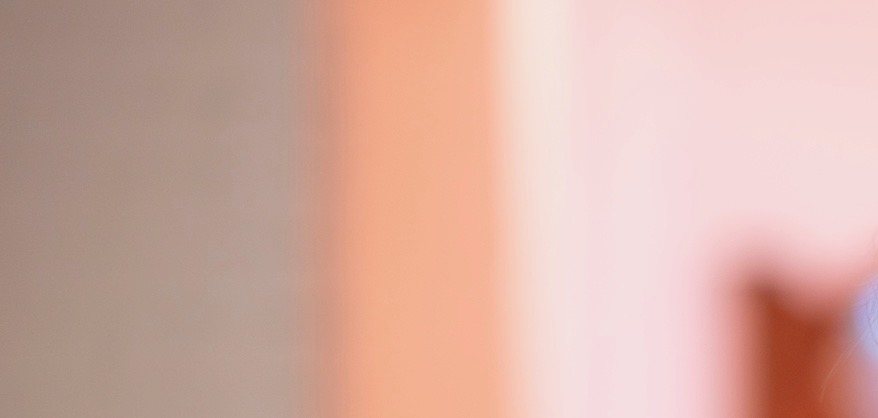
Q-Switched Laser For Pigment
Q-Switched Laser
Q-Switched Laser treatments provide a highly effective solution for unwanted pigmentation, skin rejuvenation, and tattoo removal. This versatile technology delivers exceptional results with minimal risk, ensuring optimal care for all skin types.
Key benefits of Q-Switched Laser treatment:
- Targets unwanted pigmentation: Removes sun spots, age spots, melasma, and other pigmentation issues.
- Safe for all skin types: Suitable for patients with lighter and darker skin tones.
- Quick sessions, minimal downtime: Most treatments can be done in 30 minutes, with no disruption to your routine.
- Tattoo removal: Effective on multiple tattoo ink colors, including stubborn dark and red shades.
- Rejuvenation: Stimulates collagen, improves skin tone, tightens pores, and brightens the complexion.
Conditions treated by Q-Switched Laser:
Pigmentation Removal
- Sun Spots and Age Spots: Effectively targets pigmentation caused by sun damage and aging, leaving a more even complexion.
- Melasma: Managed with low settings over a series of sessions. Melasma is treated as part of a broader care plan.
- Post-Inflammatory Hyperpigmentation (PIH): Ideal for pigmentation following acne or injury, restoring your skin’s natural clarity.
Tattoo Removal
- Multiple Ink Colors: Q-Switched Laser efficiently removes dark inks (1064nm wavelength) and lighter inks such as red or orange (532nm wavelength).
- Precise Removal: Safely breaks down tattoo ink particles without damaging surrounding tissue.
Skin Rejuvenation
- Laser Genesis: Targets fine lines, pore size, and uneven skin tone, stimulating collagen production for smoother, more youthful skin.
- Laser Peel: An exfoliating treatment that addresses acne, large pores, and dull skin, leaving your skin refreshed and radiant.
Before & after results
Explore the transformation that Q-Switched Laser treatment has delivered to real patients at Northside Dermatology.
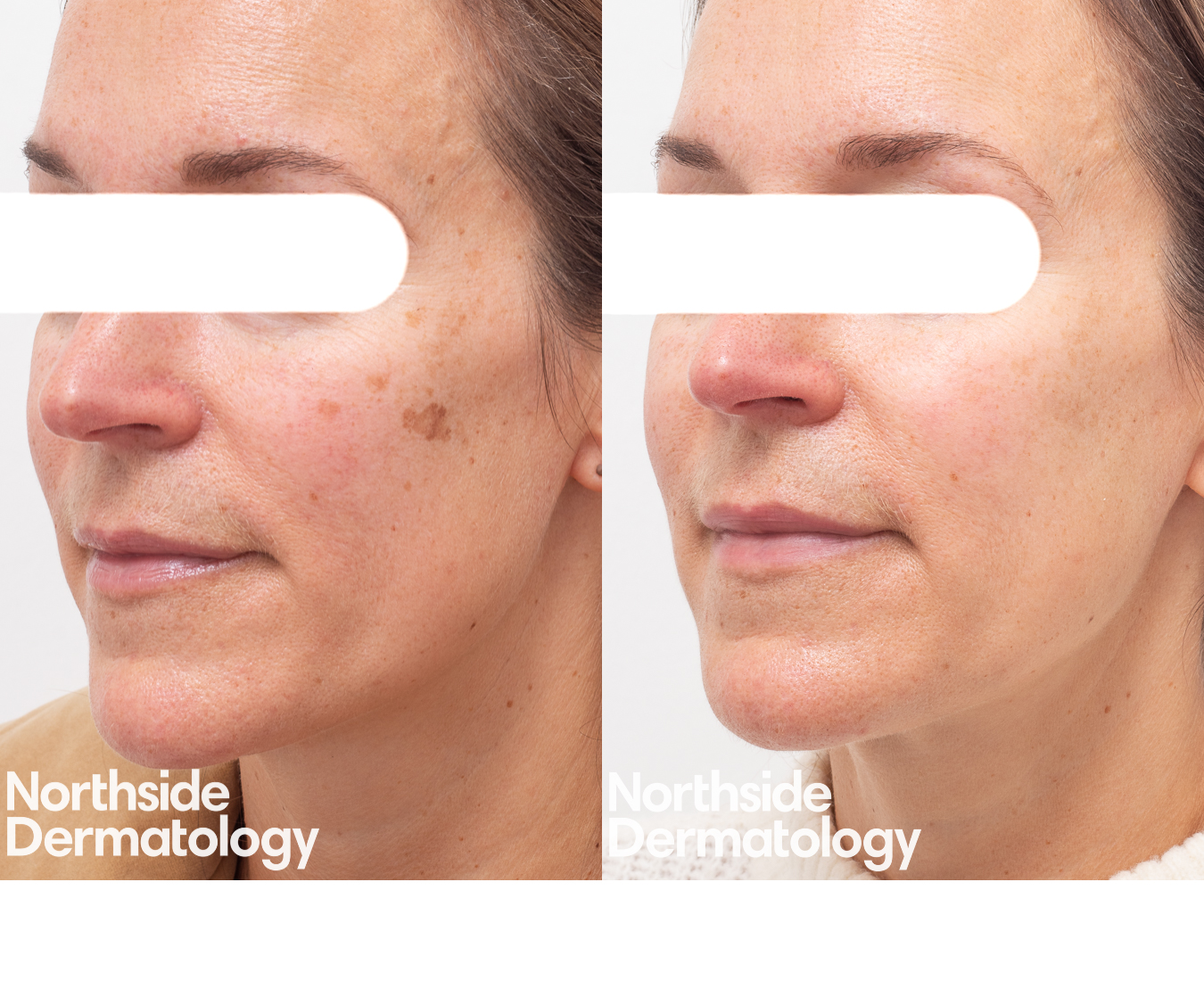 Before and after 1 treatment with Q switched laser toning. Note improvement in skin radiance, pore size and pigmentation. Absolutely no downtime.
Before and after 1 treatment with Q switched laser toning. Note improvement in skin radiance, pore size and pigmentation. Absolutely no downtime.
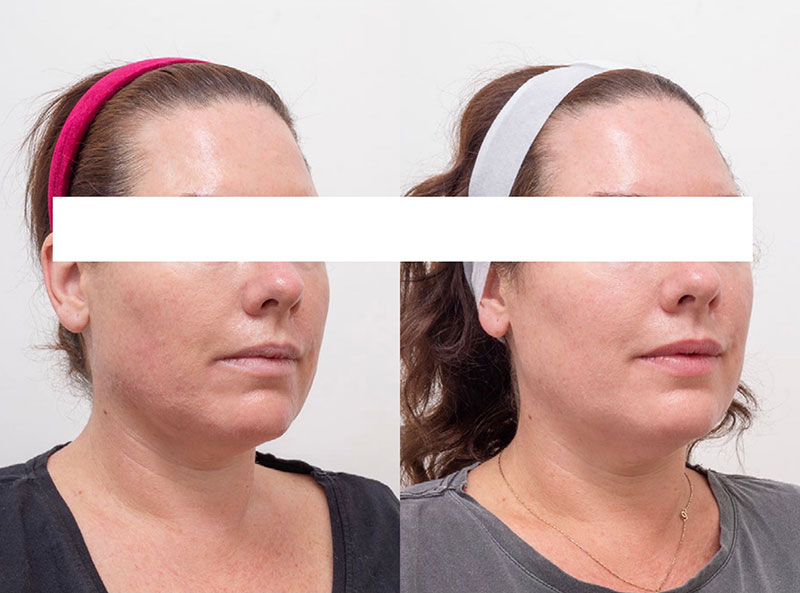
Before and after combination treatment including sun protection, oral medication, skin lightening cream and Q switched laser for melasma.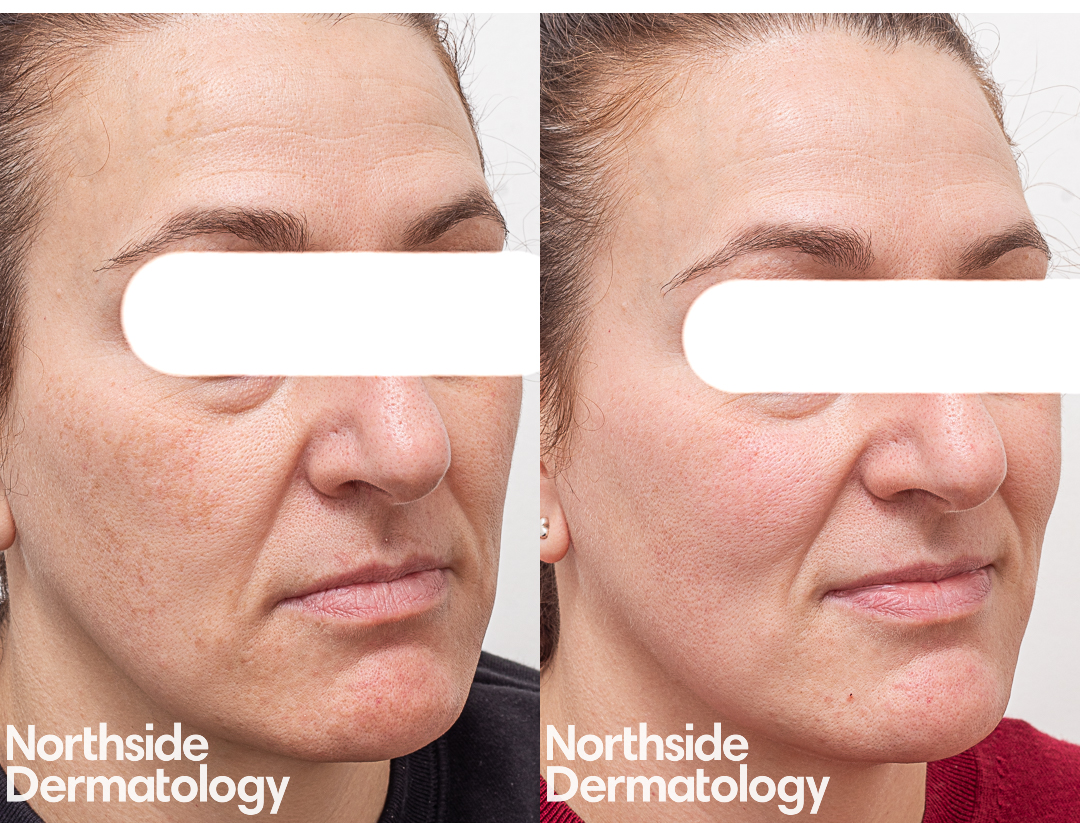
Below: B and A following Q-switched laser treatment for pigmentation and skin texture
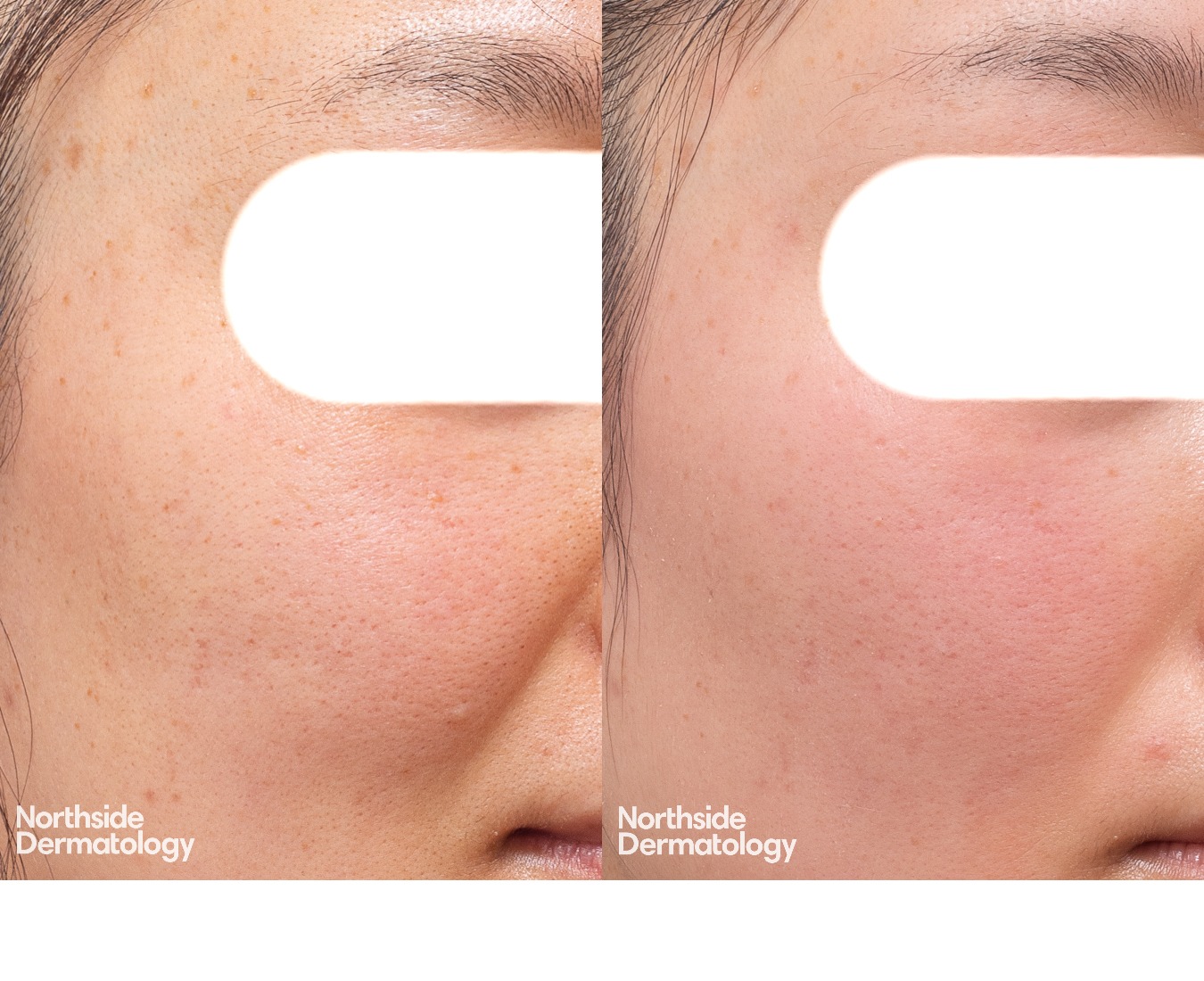
There are actual patients of Northside Dermatology. Photos are taken with our standardised clinical photography system and published with patient’s consent. Individual results may vary. A thorough consultation is required prior.
How the Q-Switched Laser works
The Q-Switched Laser emits ultra-short bursts of high-energy light, which specifically target and break down unwanted pigmentation or tattoo ink. The energy pulses pass through the top layers of the skin without causing damage, ensuring precise results with minimal risk of scarring or adverse effects.
Once the pigment is broken down, the body’s immune system naturally eliminates these fragments over time. This process makes the Q-Switched Laser a highly effective option for:
- Removing unwanted pigmentation
- Treating pigmented lesions
- Rejuvenating the skin
- Removing tattoos
For skin rejuvenation, the laser also gently exfoliates the outer layer of the skin, stimulates collagen production, and encourages cellular renewal for a clearer and brighter complexion.
What to expect during your treatment:
Laser Toning
Laser toning is a gentle procedure with minimal discomfort. Patients report a mild tingling sensation, and sessions typically last around 30 minutes. This makes it an ideal treatment for those seeking rejuvenation without downtime.
Q-Switched Mode
For more intensive treatments, a topical anaesthetic may be applied to enhance comfort. Patients often feel warmth or a light snapping sensation as the laser passes over the skin. Protective eyewear will be worn during the procedure to ensure safety.
Aftercare and recovery:
Laser Toning Recovery
Following laser toning, mild redness may occur but typically subsides within a few hours. Patients can return to daily activities immediately, with no significant downtime.
Q-Switched Mode Recovery
For more targeted treatments, the treated area may darken and develop scabs. These should heal naturally over 5-7 days, with pigmentation fading gradually after each session. Avoid picking at scabs to ensure proper healing. Generally, 3-4 sessions are recommended for optimal results.
The China Doll Laser Facial
The China Doll Laser Facial is a specialised treatment using the Q-Switched Laser combined with carbon particles to deeply cleanse and exfoliate the skin.
It is ideal for:
- Pore Minimisation
- Collagen Stimulation
- Skin Brightening
- Reduction of Fine Lines and Wrinkles
The carbon layer applied to the skin absorbs impurities, which are then vaporised by the laser. This leaves the skin feeling smooth, clean, and revitalised.
FAQs
How does Q-switched differ from Picosure laser?
Q-switched and PicoSure lasers both treat pigmentation in the skin, but they differ in the speed of their laser beam delivery. Q-switched lasers deliver pulses in nanoseconds (billionths of a second), while PicoSure lasers deliver in picoseconds (trillionths of a second), making them about 100 times faster. This faster pulse of PicoSure allows it to break down pigment into finer particles more efficiently, which often leads to fewer treatment sessions and minimises the risk of surrounding skin damage
How does our dermatologist use the pigment lasers in our practice?
Lighter skin patients (caucasian similar ) – we use the Q-switched laser and LaseMD laser to treat pigmentation. Patient with skin of colour, we use Picosure Pro laser as the wavelength; the pulse duration of the laser makes it a safer treatment.
How does the Q-Switched Laser work?
The Q-Switched Laser emits ultra-short pulses of high-energy light that target unwanted pigmentation or tattoo ink. The energy shatters the pigment into smaller fragments, which are naturally eliminated by the body’s immune system over time. This laser can also be calibrated for skin rejuvenation by stimulating collagen production and exfoliating the outer skin layers.
How Many Sessions Will I Need?
The number of treatments required varies depending on the condition being addressed. For pigmentation, 3-10 sessions may be recommended. Tattoo removal and skin rejuvenation will require a personalised treatment plan tailored to your skin and treatment goals, which will be discussed during your consultation.
What should I expect during a Q-Switched Laser treatment?
For laser toning, the treatment is gentle with minimal discomfort and no downtime. For more intensive **Q-Switched treatments**, a topical anaesthetic may be applied to ensure comfort. You may feel a light snapping sensation, and protective eyewear will be used throughout the procedure.
How do I prepare for my treatment?
We recommend avoiding sun exposure and tanning beds for at least two weeks before treatment. Your dermatologist may also suggest using a pigment-lightening cream in the weeks leading up to your session to enhance results and reduce the risk of side effects.
What is recovery like after Q-Switched Laser?
After laser toning, you may experience mild redness that resolves within a few hours, allowing you to resume normal activities immediately. For more intensive treatments, treated areas may darken and form scabs, which heal over 5-7 days. It’s important not to pick at the scabs and allow them to heal naturally. Results typically improve with each session.
How many treatments will I need?
The number of sessions required depends on the condition being treated. For pigmentation issues, you may need 3-10 sessions for optimal results. Tattoo removal generally requires multiple treatments as well, depending on the size and color of the tattoo. Your dermatologist will discuss a personalised treatment plan during your consultation.
Is Q-Switched Laser safe for all skin types?
Yes, the Q-Switched Laser is safe for all skin types, including patients with darker skin tones. Its precision targeting reduces the risk of damage to surrounding tissues, making it a versatile treatment for a variety of skin conditions.
What Is the Dermatologist’s Perspective on the Q-Switched Laser?
A dermatologist should assess any pigmented lesion to ensure it is safe to treat with a laser and we are not mistreating melanoma.
The success of a Q-switched laser treatment is determined by a number of factors including: the correct diagnosis, the choice of laser settings, pre-treatment skin preparation and other concurrent prescription creams and medications.
The Q-Switched laser is a versatile laser that offers different wavelengths to target a variety of skin conditions including sun spots, age spots, freckles, pigmentation and some birthmarks. An added bonus of this laser is its rejuvenation effect on the skin.
The Q-switched laser has been around for many years. Dermatologists have a lot of experience in the use of this laser for treating skin pigment. Many scientific papers back its safety and efficacy. It’s one of the go-to lasers for those with skin of colour.
Book a consultation
Our team of experienced dermatologists carefully assess every patient to ensure that the Q-Switched Laser is the most appropriate treatment for their skin concerns. We use advanced laser technology and follow evidence-based protocols to ensure patient safety and satisfaction.
Contact us today to schedule your personalised consultation.
– Call us at 03 8582 8688
– Or Book Online
Send us a message
Contact Us
Hours of Operation
Monday - Friday, 9am-5pm
Phone Number
Fax Number
Emails
Medical Enquiries:
reception@northsidedermatology.com.auLaser & Cosmetic Enquiries:
cosmetic@northsidedermatology.com.au